
Average reading speed is defined as the number of words a person can read within 60 seconds. It is denoted as words per minute or wpm. Reading speed varies from person to person and also depends on the material. The general population has an average read speed of 200–300 words per minute.
Reading speed also depends on whether you are reading silently or orally. Oral reading speed tends to be slower as compared to silent reading speed. This is because when we are reading silently, we do not need to concentrate on our pronunciation. Reading out loud makes us take note of both our comprehension and pronunciation.
When we are reading out loud, we also have to ensure that our listeners understand as well. This is why we tend to read slowly to avoid confusion.
Our reading speed improves on its own with age. As we grow, we automatically read more and learn more, and this influences our reading speed. However, people still want to improve their reading speeds so as to read more in a shorter amount of time.
No matter what age group you belong to, it is possible to significantly increase your reading speed. We are going to present to you the various methods on “How to read faster?”. This detailed write-up will tell you multiple ways to do so.
Reading isn’t just a solitary skill. It also helps you improve your writing skills. Reading also upgrades your IQ by 6 points. And speed reading lets you stay ahead of your peers, as you can gain and process information faster than others. You can go through many popular high school books in much less time than your classmates by adopting speed reading.
There are so many benefits to speed reading. But first, let us understand the terms associated with reading.
What is the Difference Between Reading Speed, Speed Reading, Skimming, and Scanning?
When it comes to upgrading our reading skills, we should begin by knowing about the 4 terms mentioned in the heading above – reading speed, speed reading, skimming, and scanning.
Reading is the process of successfully identifying and processing a sequence of words to extract the actual, deliberate meaning of the text.
At times, there can be some indirect references hidden within the text. Now it is the reader’s job to recognize and decipher any kind of wordplay or ambiguity and recover the complete essence of the text. The goal is to get to the meaning, whether it is implied or explicitly instructed.

Reading is actually a complex cognitive process. There are 3 types of reading:
- Subvocalization: Also known as silent speech, subvocalization is the process of reading and sounding out each word in the mind. The readers who subvocalize their reading process are called motor readers or mental readers. Because every word is read individually, this is the slowest form of reading, with an average read speed of 200–250 words per minute.
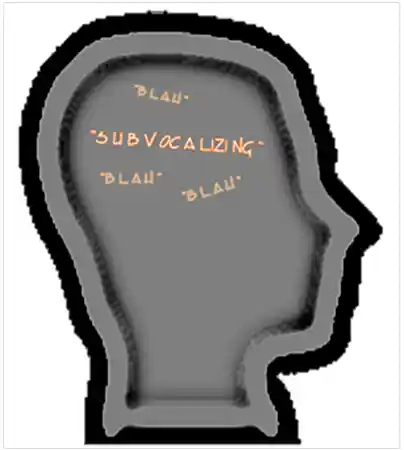
- Auditory Reading: In this process, the reader engages with the information by listening to someone else read it out loud for them. Note that the reader doesn’t necessarily need to pronounce the words but rather just listen carefully and repeat the words in their head.

Auditory readers can read up to 450 words in a minute, but this speed is also dependent on the speed of the speech they are listening to.
- Visual Reading: This is the fastest way to read. Visual reading is the process of concentrating on the meaning of words and not on their pronunciation. Visual readers don’t listen or vocalize the text. They just focus on understanding what they are reading. This is why it is possible for them to read 700 words per minute.

Your reading form is derived from your learning style. A child’s reading comprehension can be improved by thoroughly understanding their learning style. Depending on whether they are visual, auditory, or kinesthetic learners, educators can mold their teaching style and achieve better learning.
There are certain terminologies associated with reading that also need to be understood. Let us now move on to them.
Reading Speed
Reading speed can be defined as the duration of time taken to read a designated piece of text. A more technical way to define it could be “the number of words a person can read correctly per unit of time”. The unit of measuring reading speed is wpm, which means words per minute.
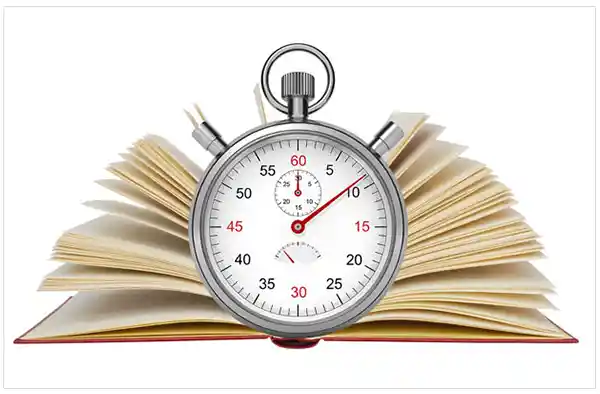
As people comprehend information at varying paces, the speed of reading also differs from person to person. Not only that, a single person can prefer different speeds of reading depending on the purpose.
For instance, A person who is reading to learn or gain new information would have a very slow speed of reading 100–200 wpm. And if the reading is done to memorize the text, the speed could go even lower than 100 wpm.

Besides, the silent reading speed and the oral reading speed of a person are also different. The average read speed of an adult for silent reading is 238 wpm for non-fiction. And when it comes to fiction, the speed can even go up to 260 wpm. As for oral reading speed, it can be somewhere near 183 wpm.
So if you ask, “What is a good reading speed?”, the answer depends on a lot of factors.

Speed Reading
Speed reading simply means reading very fast. The concept can be traced back to the late 1950s to its originator, Evelyn Wood. An educator and a businesswoman, Evelyn Nielsen Wood is best known for popularizing speed reading (or as Wood liked to call it, dynamic reading) through her business, Evelyn Wood Reading Dynamics.

She was fascinated by the fact that some people were naturally faster readers than others. And that, too, without compromising their comprehension. This inspired her to develop a reading system to improve the pace of reading while ensuring and even upgrading comprehension.
Wood suggested tactics like reading down the page instead of left to right, reading chunks of words in place of individual words, meta guiding (using a finger or pointer to guide the eyes through the text), and refraining from re-reading.

Even though some people consider speed reading a hoax or a scam, it is actually quite common. People do like to try reading faster, and a faster reading speed is associated with higher intelligence.
Proficient readers can read up to 280–350 wpm, and a speed of 500-750 is considered excellent. There are also people who claim to have a reading speed of 750–1000, which may seem unbelievable. French author and cognitive neuroscientist Stanislas Dehaene, says that the 1000 wpm reading speed “must be viewed with skepticism”.
Skimming
Skimming can be considered a type of speed reading activity. In this, the reader moves through the article to get a general idea of the content. This is mostly done by reading the first and last lines of a paragraph that tells you what the article, blog, or entire text is about or is going to cover.
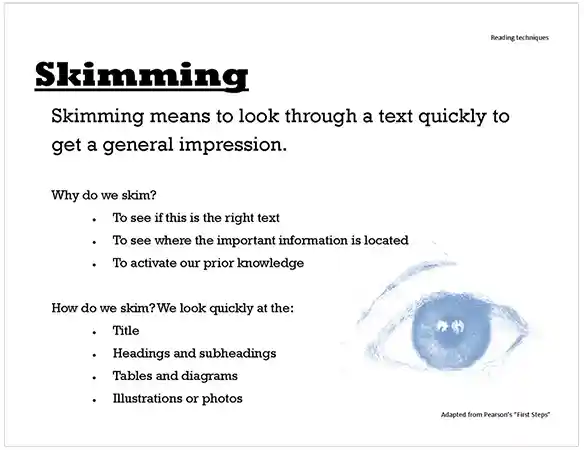
The focus is on understanding the scope of the write-up rather than grasping all the included information. This saves time, as you don’t have to carefully read the entire piece and then decide whether it is serving your purpose of reading or not. Skimming is done using various techniques like meta-guiding, or making use of the text features included in the article, images in the article, etc.
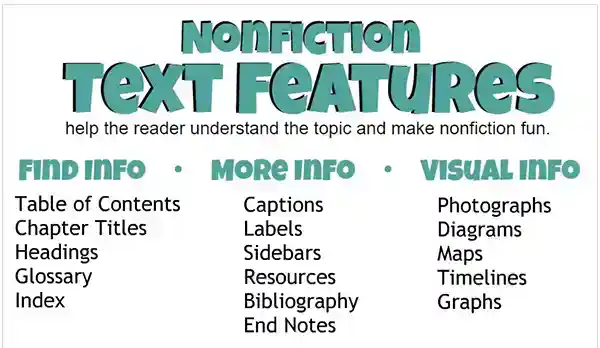
Skimming is a pretty common practice and takes the reading speed up to 700 words per minute, which is much higher than the comprehensive reading speed of 200–230 wpm. In most cases, this process comes naturally to readers; however, it can be acquired or improved with practice as well.
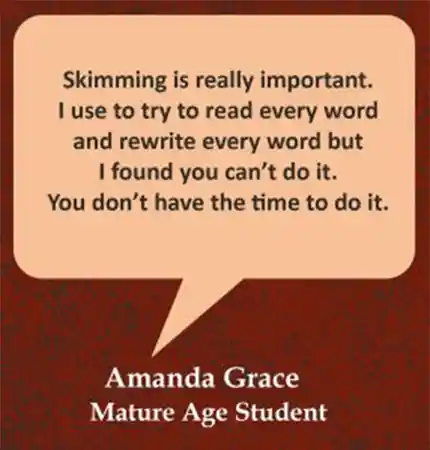
Scanning
Scanning takes the process of skimming one notch higher. The reader scans the article with a clear objective in mind, as they want to find a specific piece of information. Similar to skimming, scanning also employs meta-guiding and utilizes the heading, subheadings, or font variations to move faster through the content.
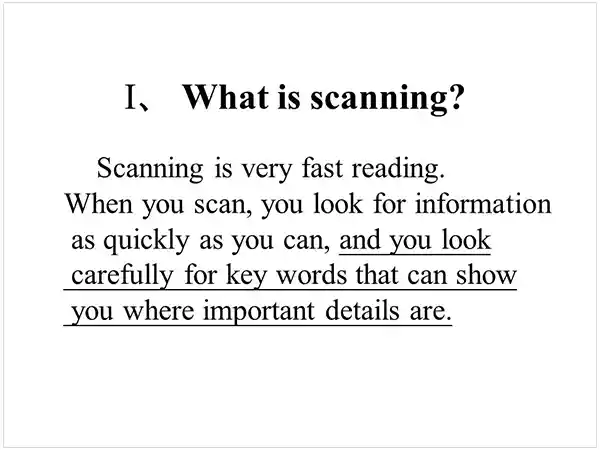
Knowing these terms is essential, as this helps in understanding your own reading game. You must also be curious to know facts about reading speed. Many people Google questions like, “How many pages can you read in an hour?” or “How fast should I read?”. The upcoming section is going to present some data which can answer these sorts of questions.
Also Read: What is Guided Reading and How to Use It in Class?: Examples, Components, and Features
How Long Does it Take to Read 100 Pages?
Whether you are an occasional reader or a bookworm, you have your own speed of going through pages. A person’s average read speed is also dependent upon their grade level, as well as how much they read in general. Because reading is a cognitive process, it certainly gets better with practice and time.

It is hard to specify a “general speed of reading”, as people like to read at their own pace and as per their purpose. However, we can make some rough estimates about stuff like, “How long to read 100 pages?”, or “How to read faster?”.
We are now presenting some stats to you, which will give you an idea about the various reading speeds and how fast it is possible to read.
Average Reading Speed Per Word
We are starting with data about reading per word for slow, average, and fast readers. Consider the fact that a slow reader is estimated to read approximately 125–150 words in a minute; for an average reader the reading speed would be 300 wpm, and a fast reader’s average read speed is 450 wpm.
| Number of Words | Slow Reader | Average Reader | Fast Reader |
| 125 Words | 1 minute | 0.4 minutes | 0.3 minutes |
| 250 Words | 2 minutes | 0.8 minutes | 0.6 minutes |
| 500 Words | 4 minutes | 1.7 minutes | 1.1 minutes |
| 600 words | 5 minutes | 2.0 minutes | 1.3 minutes |
| 750 words | 6 minutes | 2.5 minutes | 1.7 minutes |
| 800 words | 6 minutes | 2.7 minutes | 1.8 minutes |
| 1,000 words | 8 minutes | 3.3 minutes | 2.2 minutes |
| 1,500 words | 12 minutes | 5.0 minutes | 3.3 minutes |
| 2,000 words | 16 minutes | 6.7 minutes | 4.4 minutes |
| 2,500 words | 20 minutes | 8.3 minutes | 5.6 minutes |
| 3,000 words | 24 minutes | 10.0 minutes | 6.7 minutes |
| 3,500 words | 28 minutes | 11.7 minutes | 7.8 minutes |
| 4,000 words | 32 minutes | 13.3 minutes | 8.9 minutes |
| 5,000 words | 40 minutes | 16.7 minutes | 11.1 minutes |
| 7,500 words | 60 minutes | 25 minutes | 16.7 minutes |
| 10,000 words | 1.3 hours | 33.3 minutes | 22.2 minutes |
| 20, 000 words | 2.7 hours | 1.1 hours | 44.4 minutes |
| 25,000 words | 3.3 hours | 1.4 hours | 55.6 minutes |
| 30,000 words | 4.0 hours | 1.7 hours | 1.1 hours |
| 50,000 words | 6.7 hours | 2.8 hours | 1.9 hours |
| 75,000 words | 10.0 hours | 4.2 hours | 2.8 hours |
| 100,000 words | 13.3 hours | 5.6 hours | 3.7 hours |
Average Read Speed Per Page
Next up is the data about how long it is going to take to read a certain number of pages. You can use this data to find out whether you are a slow, average, or fast reader. And for those who want to try out speed reading, can also see what they are supposed to be chasing.
| Number of Pages | Slow Reader | Average Reader | Fast Reader | Speed Reader |
| 10 Pages | 33.3 minutes | 16.7 Minutes | 11.1 minutes | 8.3 minutes |
| 25 Pages | 1.4 hours | 41.7 minutes | 27.8 minutes | 20.8 minutes |
| 50 Pages | 2.8 hours | 1.4 hours | 55.6 minutes | 41.7 minutes |
| 100 Pages | 5.6 hours | 2.8 hours | 1.9 hours | 1.4 hours |
| 250 Pages | 13.9 hours | 6.9 hours | 4.6 hours | 3.5 hours |
| 500 Pages | 1.2 days | 13.9 hours | 9.3 hours | 6.9 hours |
| 750 Pages | 1.7 days | 20.8 hours | 13.9 hours | 10.4 hours |
| 1000 Pages | 2.3 days | 1.2 days | 18.5 hours | 13.9 hours |
Based on the data above and your own reading speed, you can see, “How long should it take to read 100 pages?”. This might help you choose which book you want to take along on a trip next time. Or how much time would you need to finish the new novel you got hooked on without having a cliffhanger moment?
Even if your inherent pace of reading is pretty fast, there can be certain external factors that can slow you down. So what are these causes, and how do they affect your speed of reading? You are about to find out.
Also Read: Can You Share Audible Books: 4 Easy Methods to Share Audible Books for Free
What are the Factors that Affect Reading Speed?
Based on the figures mentioned in the section above, it can take you roughly 2.8 hours to read 100 pages if you have an average speed of reading 300 words per minute.
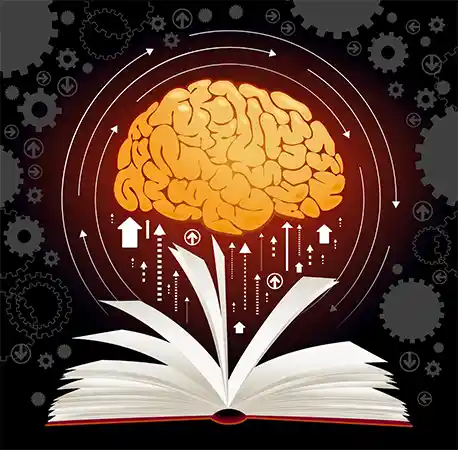
However, the stats are observations of people reading in a calm, stress-free, and undistracted manner. It does not take a lot of factors into account. The factors which can divert your focus. So what are these factors, and how does it affect the “average pages read per hour”? Let us find out.
- People who are in college or have busy jobs do not get much time to read. All the assignments and projects take up their time. So for them, the time is so less and the content is vast. Hence, they naturally start to speed read. This makes them better readers.

Additionally, as they are always involved with reading, it gradually increases their speed of reading. Enhancing reading speed is a matter of practice. And the college-goers are having a lot of it.
- A person’s speed of reading also depends upon what they are reading. If the book seems interesting to the reader, they read it much faster than they read books that they just wish to finish.

- Reading speed also decreases when people are trying to retain the information rather than just skimming through it. As mentioned before, the average silent reading speed for an adult is 238 wpm for non-fiction and 260 wpm for fiction.

However, efficient fast readers can go through almost 700 words per minute. The trick is to just scan the material rather than focusing on, memorizing, or enjoying the content.
- Learning something new will definitely slow you down as you need to understand things accurately. The same goes for reading. If you are trying to understand facts, you need to fixate on pieces of information. Your brain is more focused on memorizing the words rather than speeding up the reading process.
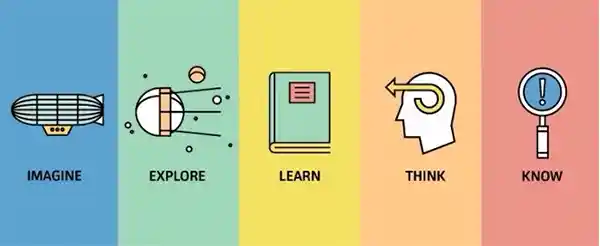
- Distractions also take up our time. If you can sit with a book continuously for hours, we will be able to finish it. But this seems unlikely because as humans, we would take breaks from our schedule as our mind gets tied. These short breaks are necessary as a tired mind won’t be able to grasp information.
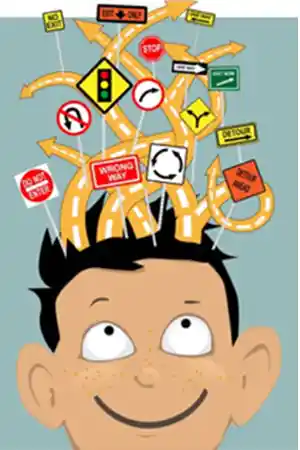
Also, as we live in a societal framework, our general life can also get in the way of this constant sitting. We would have to attend or talk to people. Thus, it becomes impossible to devote our entire time to reading alone.
- Our age and experience also play a vital role in our reading skills. For instance, a student in the third grade can read almost 150 words per minute. Whereas, an eighth grader will read 250–300 words per minute.
These numbers go up by the time people reach college. The reading speeds of a college student and a college professor are 450 wpm and 675 wpm, respectively.
- Print size, font style, etc. are a few tiny things that have a huge impact on our reading speed as well. A clean presentation makes it easier for us to read. There are certain font styles that may look fancy but make it hard to understand the content. On top of that, the reader also loses interest because of this unnecessary struggle.
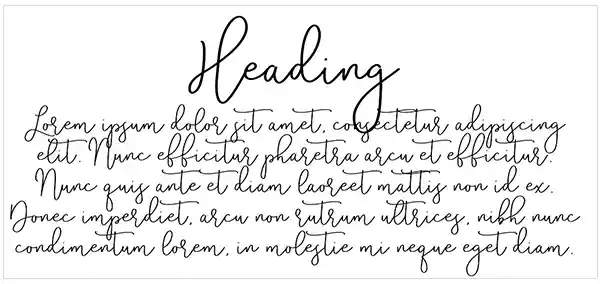
Now that you know about the possible disturbing factors, you can ensure to stay away from them. Additionally, you can try some other methods that will help you boost your pace of reading.
How To Read Faster?
The variability of reading speed among people has been studied by many. A study by Kuperman and Van Dyke in 2011, revealed that the average pages read per hour by a person is dependent upon their language processing skill rather than their eye-movement control abilities.
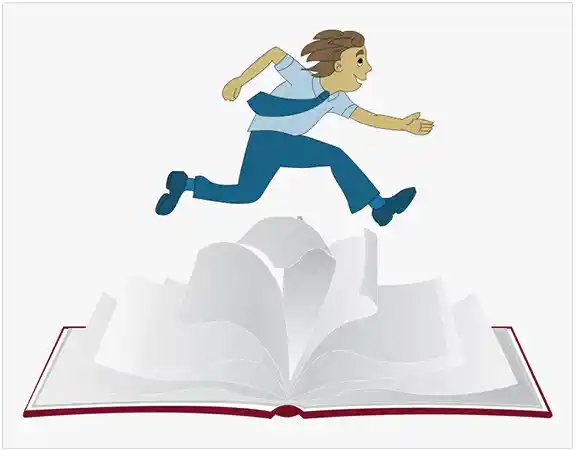
People who read with superspeed tend to spend less time on each word. They read entire phrases together. They swiftly move through the content by making longer saccades. Also, the more you read, the more words you recognize. When you encounter a word that has occurred frequently, you can read it without fixating on its letters. This is what saves you time.

So if you are wondering how to read faster, many techniques can help you with this. We are going to explain them to you in a way that you can adopt them easily.
- You have to begin by finding your actual reading speed. Start by reading a page from any book you prefer. After you find out your pace, your next step is to read more words per minute. Start by reading 10 words, and gradually take it to 15, 20, and 25 words. Also, don’t get disheartened if you fail sometimes.
- Subvocalization is the major culprit behind slowing down readers. This process of internal speech makes the reader spend time on each word individually. This way, our reading speed correlates to our talking speed, and we can only read as fast as we can talk.
If we can suppress this inner monologue, we will be able to move through the text much quicker. So the best way is to just go for a purely visual manner of reading.
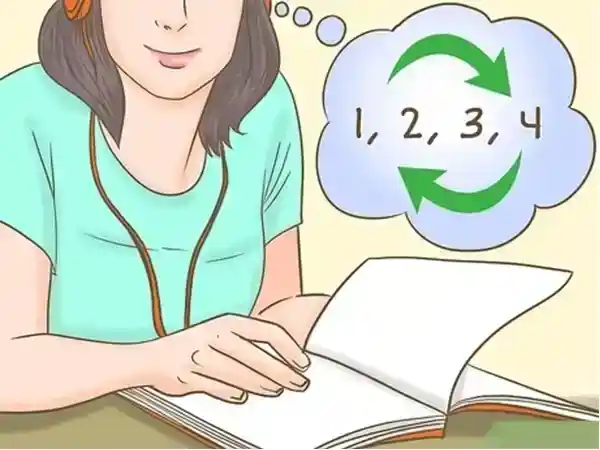
- Meta-guiding is one more strategy that enhances reading speed. You run your finger across the line while you are reading. Your eyes follow your finger, and this adjusts the eye movement as per the speed of the movement of the finger. Move your finger faster to avoid unnecessary fixations.

- Embrace the RSVP method. RSVP stands for Rapid Serial Visualization Presentation. This is a process where sentences are presented to readers at a speed slightly higher than their normal reading speed. The speed is also gradually increased, and the readers have to read and comprehend the text as it appears. This helps increase the reading speed.
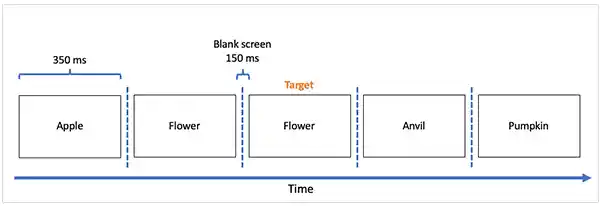
In the RSVP method, the presented text follows a format where a stream of words or letters has the same color (preferably gray) except for one, which is mostly displayed in the color red. The reader has to report the red word or letter.
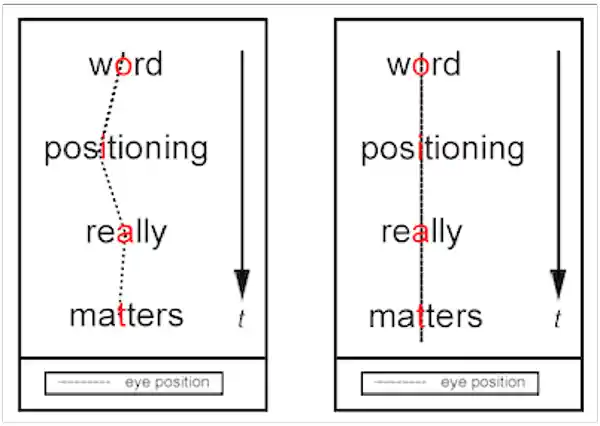
This helps the reader focus on only one single point without any eye movements. Introduced by psychologist Mary C. Potter, the RSVP method is a scientific way of studying the timing of vision.
- Word chunking fuels your reading speed. Let us explain. Word chunking means reading a bunch of words altogether rather than reading every word one by one. What happens is that your eyes make fewer stops, thus reducing fixation. As the human eye can read 1.5 inches of text in a single glance, you can read words in groups of 4–5 words at a time.

- One clever method is to convert words into scenarios in your head. Whether it is fiction or nonfiction, you should have a simultaneous mental progression of the events in your mind. This makes reading interesting and recalling the events easier.
- Reading quickly can affect your comprehension. Your goal is not just swimming through words; you have to understand and remember what you read. An easy way to get information is by associating new facts with older or familiar things.
You can associate new words with words you already know that might sound similar; you can make a connection between the facts with some significant events in your life. This helps you retain the information easily and for longer.
- Other tactics to use are choral reading (reading aloud together with another reader), changing font size and/or style, opting for highlighting, etc.
All these techniques are proven to deliver the results they promise. Along with this, consistency and dedication will surely make you an expert reader.
There is a chance you might be wondering, “What is the need to increase my reading speed?”. Well, it has many advantages that will inspire you to indulge in the above-mentioned practices.
What are the Benefits of Speed Reading?
With so much talk about speed reading, you must be wondering, “What is the point of improving my reading speed?”. Actually, there are some wonderful perks of having a rapid reading pace. We are now going to explain all these advantages in a thorough way so that you can be more inspired to indulge in reading.
- Saves Time: This is the most obvious advantage, which you also must have guessed by now. Reading fast saves time. The faster you read, the more information you can have in less time. With the world moving too fast and we all trying to match its tempo, our reading habits are kind of taking a backseat now.

Books take you to new horizons. You can travel all around and even to enchanted lands, sitting in the corner of your room. That is the magic of reading. And when with a shortage of time, speed reading is the best way to soak up information.
- Makes your brain agile: Your brain is a muscle that gets stronger the more you use it. And reading is the best brain-boosting activity for you. It stimulates brain activity and helps you avoid conditions like Alzheimer’s and Dementia in the long run.
When you speed read, you are challenging your brain to encounter and comprehend information faster. This keeps your brain active and enhances the benefits of reading.
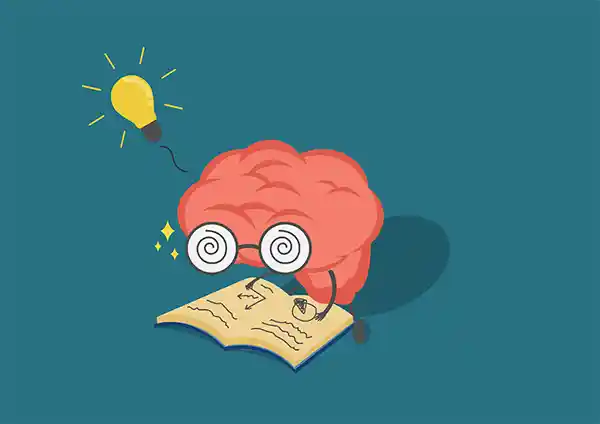
- Upgrades analytical skills: A reading brain, or a brain that is used to reading, has better logical prowess than a non-reader one. This is because you are engaging different parts and abilities of your brain at once. You are recognizing words, and deciphering their meaning, along with either enjoying or memorizing the content.
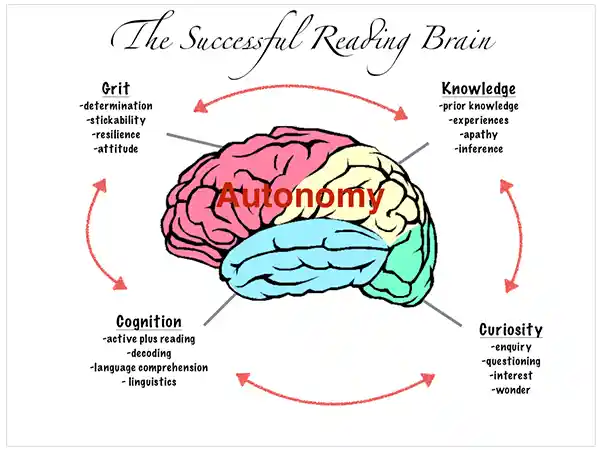
As you can see from the image above, reading impacts the brain in so many different ways. Now, when you speed read, you are speeding up all of these processes. You are preparing your brain to understand and arrange information faster.
Our brains comprehend information by making a correlation between new information and existing knowledge. With speed reading, we call in the prior database much faster.
- Enhances knowledge: It is a known fact that reading helps you gain knowledge. But speed reading elevates your knowledge database even more. Well, the reason is simple, you read more in less time. Let’s say you can read 250–300 wpm. Speed reading will enhance this, and you will be reading almost 400–700 words per minute. You can finish the books much faster, and your brain will swell up with knowledge of a variety of fields.

- Improves concentration and discipline: One of the major merits of speed reading is increased focus. The human mind is prone to distraction. When our minds stroll, it becomes harder for us to concentrate on what we are reading. Thus, we are unable to gain the information we intended to.

To increase our speed of reading, we need to be much more focused because of faster reading and comprehension. This prevents our brains from wandering off and getting lost in thoughts. Hence, speed reading empowers concentration and makes us commit to the task at hand.
- Relaxes the mind: Reading is proven to calm your mind. Just like music, reading also helps you unwind after a stressful day. The soothing sound of turning pages, the smell of new books, the mental conversation with the author, and the detachment from the world, all put our minds to rest.

Trust us, Dr. David Lewis stated the ultimate truth. As reading calms the chaos, speed reading makes it even better. The faster you read, the more you will be able to lose yourself in the world of books. A lot of people prefer reading their favorite books over active meditation.
- Builds good habits: Books are a better way of seeing the world. Regular reading makes it a habitual activity for you, and you will start to love reading books.
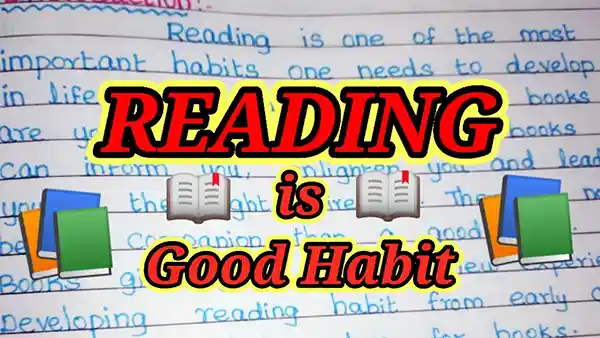
Reading is indeed a good habit with many benefits. Firstly, you choose books over gadgets. This saves your eyes from the damaging glare of the blue light, and your brain from the toxic social media world.

Reading fiction develops empathy as we get to understand the emotions of the characters from a broader perspective.

Reading regularly keeps you updated on your vocabulary. This is also a sign of intelligence. Reading teaches you words and phrases that, in general, might be difficult or impossible to catch in life. Speed reading hones your reading skills, which makes reading more enjoyable for you.
- Enhances visualization: Speed reading requires you to notice and pick up words much faster than your normal, relaxed pace. This not only makes you a proficient reader, but it also enables you to notice stuff in real life quickly. You find out new reading and memory strategies and master them. This helps you with every aspect of your daily life.

- Strengthens problem-solving skills: Reading faster trains your subconscious mind to react swiftly to situations. Just like you identify words and phrases quickly with speed reading, your subconscious mind would be able to react to situations instantly. You will be able to locate the “What, Where, Why, and How” of the situation quickly and strategically move toward the resolution.
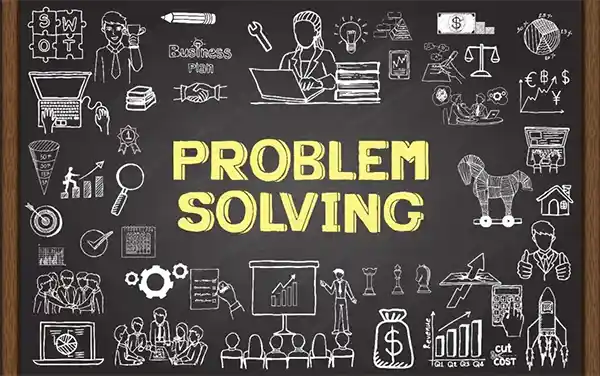
- Boosts self-confidence: When you master the skill of speed reading, it bestows you with the ability to quickly skim through new information. This way you get to gain new experiences and information much faster. And that is a surefire way to learn anything faster than others.
You become confident in your abilities. This confidence reflects in your personality, and you easily outshine everyone in the room.
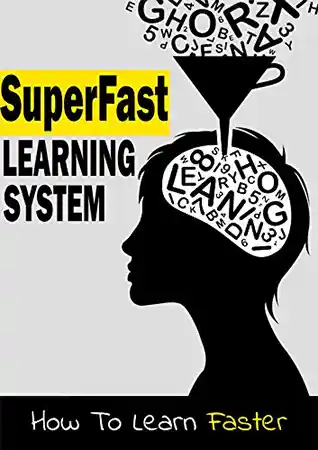
Your rapid learning abilities together with your acquired skills open new doors of possibilities for you. You are psyched up to achieve your goals and face new challenges.
- Prepares you to be a leader: All successful people share one basic quality. They read. The more they read, the more they learn. Microsoft business magnate, Bill Gates, has an average read speed of 750 wpm and can read up to 150 pages in an hour. He also reads an estimated 50 books a year. This is the greatest thing to be learned from the man.
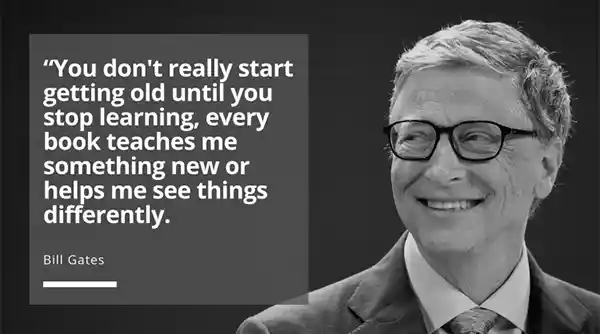
If you read at the speed of Bill Gates, you process information much faster than others. You learn and adapt qualities quickly and can guide everyone. That is what makes you a leader.
- An ardent reader can become a skilled writer too. Writing is basically putting your thoughts into words. So, if you are someone who reads a lot, you are familiar with many writing styles.
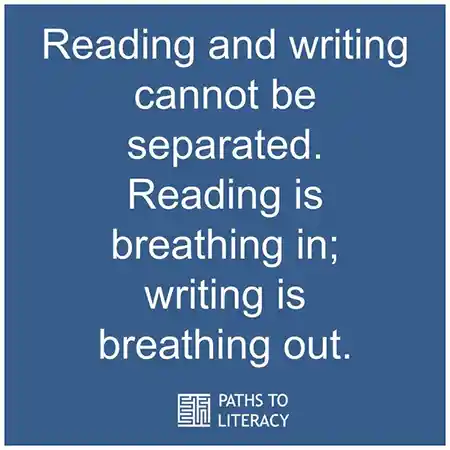
Also, you are more likely to have a stronger vocabulary as compared to any non-reader. This will surely help you to write better according to a reader’s point of view.
There are many people who are enjoying these benefits with their unbelievable reading speeds. Some of them have also proven their efficiency in various championships. Let us get to know a few such personalities.
Some Fun Facts About Average Reading Speeds of People
Speed reading works only when you need to locate information. The higher your reading speed, the more easily you can float through the sea of words. You do not become a fast reader in a day. This requires constant practice, using tips and tricks, and above all, dedication and zeal.
So if you ask, “How many pages does the average person read in an hour?” the answer would be somewhat near 50.
However, it is drastically less than the average pages read per hour by the fastest reader in the world. Here are some people with impressive and shocking reading speeds who will make you gasp with their skills.
- In 1968, Maria Teresa Calderon, from the Philippines, was in the spotlight for her extraordinary speed of reading. She claimed to read 80,000 words in a minute, with a perfect comprehension rate of 100%.

- The current Guinness World Record for being the World’s Fastest Reader is held by Howard Stephen Berg from the United States. His speed? 25,000 words under a minute with 100% information retention.

- President John F. Kennedy could read 1200 words per minute. He had a keen interest in speed reading and even enrolled in courses to improve his reading pace.

- There is another US president who is famed for having an admirable reading speed. President Jimmy Carter could read almost 2000 words per minute.

- How about a 6 times champion of the World Speed Reading Competition? Anne Jones has bagged the gold medal for being the fastest reader in the world. She read an entire 784-page edition of the Harry Potter series in exactly 47 minutes. Her average speed of reading is 4,700 words per minute, with a 67% comprehension rate.

These people are so cool, right? Imagine how many books they can finish with their supersonic reading speed.
To Sum Up
The reality is that everyone can speed read. The only trick is to be consistent and make efforts in the right direction. A lot of people want to increase their reading speed but are either unaware of or unwilling to adopt the specified methods. The techniques mentioned in this article are surely going to help you in the long run.
There is one more thing to keep in mind. Comprehension should not be compromised for speed. The ultimate aim of speed reading is to enrich your knowledge base faster. Therefore, it is always advisable to slow down when needed, as certain words or phrases might need more focus.
FAQs
Ans:
Reading is not only an enjoyable activity, but it also has many benefits; especially for our mental health. Apart from making your brain agile, reading also develops many good qualities in you.
- Reading improves your analytical skills. Habitual readers tend to showcase better results in logical tests.
- Reading keeps your brain active, which prevents you from having health issues such as Alzheimer’s, Dementia, etc.
- Reading regularly can even alter the neural connections in your brain in a way that helps elevate brain health.
- Reading helps lower stress and negative feelings.
- Reading also ensures good sleep.
- Anyone who reads actively avoids the blue-light glare of digital devices, thus soothing their eyes in the process.
- Choosing the right book will help you adopt good habits from it.
- Reading strengthens the language processing portions of the brain.
Ans: You can find many courses on the market today, that can help you to increase your reading speed. If you happen to stumble upon the right one, it will surely help you to brush up on your reading skills. The training is also a better option as the educators will be able to introduce you to the proven methods on how to read faster. 4-bet.
Ans: Reading speed is measured in many ways. The first method is to read a page from a book with a timer and after finishing it, count the number of words. Another way could be to count the number of words in the first 2 lines. Multiplying this with the number of lines gives you the number of words. Now read the page, note the time taken, and divide the number of words by the number of minutes taken to read them. You will get your average read speed in wpm.
Ans: Most people can read at least 300 words per minute. Anything less than that will make you a slow reader. And to become a fast reader, you should chase a speed of 450 words per minute.
Ans: An average person can read up to 40 pages per hour. And proven fast readers take up this speed to 60 pages an hour. So, 100 pages per hour is extremely fast. However, you should also watch out to not compromise on comprehension.
Ans: Your age and experience play a vital role in determining your reading speed. The more you read, the more versed you become.
| Age (in Years) | Grade Level | Speed (in wpm) |
| 5–6 | 1st | 53–111 |
| 6–7 | 2nd | 89–149 |
| 7–9 | 3rd | 107–162 |
| 9–10 | 4th | 123–180 |
| 10–11 | 5th | 139–194 |
| 11–14 | 6th–8th | 150–204 |
| 14–18 | High School | 200–300 |
| 18–23 | College | 300–350 |
| Over 18 | Adults | 220–350 |
Sources:


